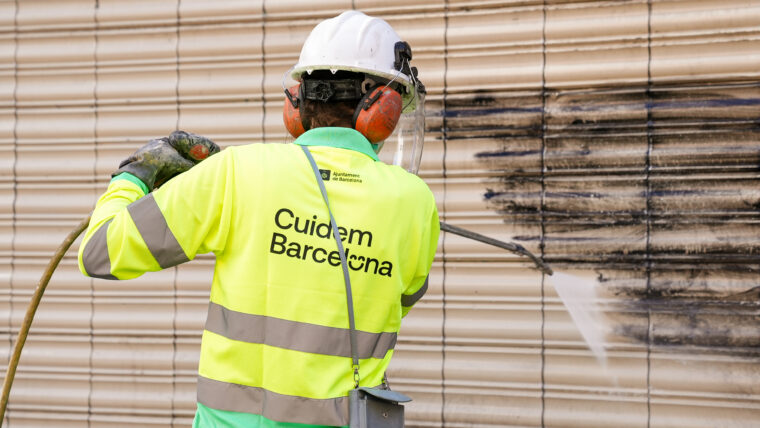Cleaning graffiti and posters: how is it organised?
Cleaning work to remove graffiti, posters and stickers is planned in previously identified priority areas and according to needs in spaces where members of the public, the City Police or municipal facilities report incidents. In all, 36 cleaning teams devote 500 hours a day to eliminating graffiti in public space, with nearly 8,000 cleaning tasks carried out every month.

Priority areas have been identified with the district offices where work is needed, taking into account the level of grubbiness, the singularity of the site in question and the volume of people there.
A total of 27 teams work in these priority areas, nine of them exclusively in the district of Ciutat Vella. Cleaning in these spaces applies to everything, not just façades but lampposts, rails, service cabinets, bike parking and more.
These zones are reviewed every four months.
Over 500 hours a day cleaning graffiti
Cleaning teams devote a total of 500 working hours a day to cleaning graffiti and removing posters and stickers from façades, urban furniture and water springs.
There are 36 teams at work from Monday to Friday, 32 of them for non-listed buildings and all other urban elements, and 4 for listed buildings. On Saturdays there are 32 units at work, with 5 in operation on Sundays and public holidays.
What’s the process?
With the exception of the previously scheduled work in priority areas, cleaning tasks of this type are activated in response to notifications by members of the public, the City Police and municipal facilities.
Spaces are initially checked, photographed and classified. In the case of listed buildings, more time is needed to study the situation and define the best course of cleaning action required in each case. Once the type of action has been determined, the work is scheduled and the corresponding cleaning team allocated.

